Discover 7 hidden attractions, cool sights, and unusual things to do in Wieliczka (Poland). Don't miss out on these must-see attractions: Wieliczka Salt Mine, Żupny Castle, and Seven Wonders of Poland. Also, be sure to include Parowóz TKp-2316 „Śląsk” in your itinerary.
Below, you can find the list of the most amazing places you should visit in Wieliczka (Lesser Poland).
Table of Contents
Wieliczka Salt Mine
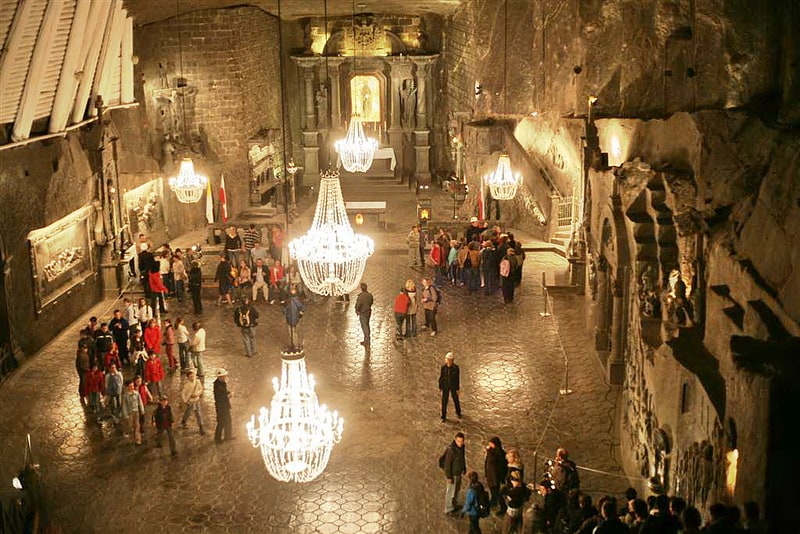
Also known as: Kopalnia soli Wieliczka
Historical place in Wieliczka, Poland. The Wieliczka Salt Mine, in the town of Wieliczka, southern Poland, lies within the Kraków metropolitan area.
From Neolithic times, sodium chloride was produced there from the upwelling brine. The Wieliczka salt mine, excavated from the 13th century, produced table salt continuously until 2007, as one of the world's oldest operating salt mines. Throughout its history, the royal salt mine was operated by the Żupy Krakowskie company.
Due to falling salt prices and mine flooding, commercial salt mining was discontinued in 1996.
The Wieliczka Salt Mine is now an official Polish Historic Monument and a UNESCO World Heritage Site. Its attractions include the shafts and labyrinthine passageways, displays of historic salt-mining technology, an underground lake, four chapels and numerous statues carved by miners out of the rock salt, and more recent sculptures by contemporary artists.[1]
Address: Daniłowicza 10, 32-020 Wieliczka
Żupny Castle

Also known as: Zamek Żupny
Castle in Wieliczka, Poland. Żupny Castle is a Gothic castle, the former headquarters of the Wieliczka and Bochnia Salt Mine. The castle is located in the former mine complex and was designated as part of the Wieliczka and Bochnia UNESCO World Heritage Site, since an expansion in 2013. The castle is located in Wieliczka, Lesser Poland Voivodeship, in Poland.[2]
Address: Zamkowa 8, 32-020 Wieliczka
Seven Wonders of Poland
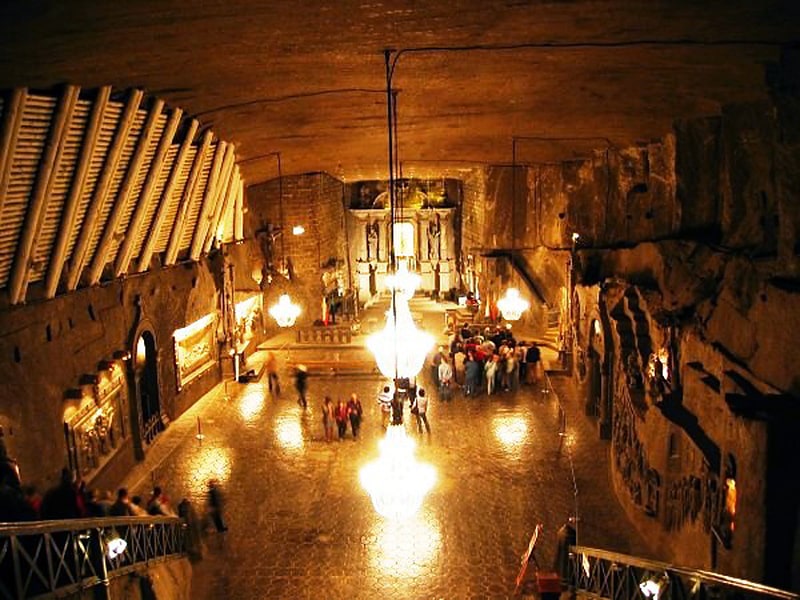
The Seven Wonders of Poland is a short list of cultural wonders located in Poland. The creation of the list was initiated by the leading Polish newspaper Rzeczpospolita in a country-wide plebiscite held in September 2007. The results were published in the following month.[3]
Parowóz TKp-2316 „Śląsk”
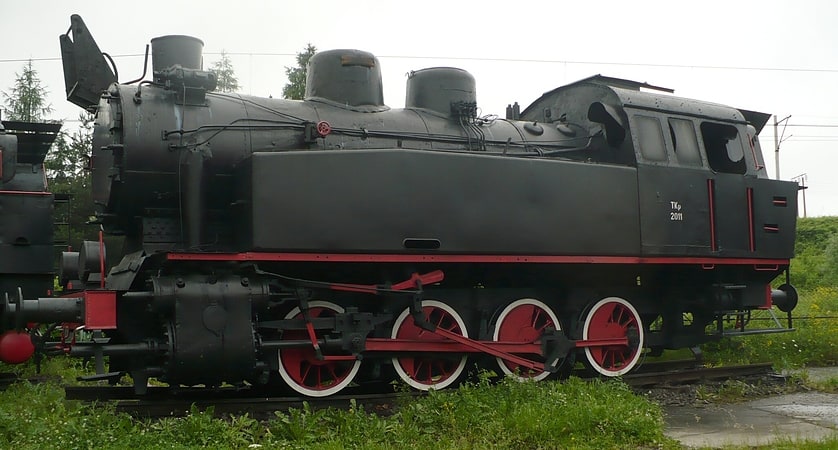
T2D Śląsk - Polish industrial steam locomotive - tenders with D-axle layout, produced at the Chrzanów Locomotive Factory in 1950-1962. It was built based on modified documentation of German Oberschlesien-type steam locomotives, constructed by Henschel und Sohn and the Chrzanów factory and produced during World War II in Chrzanów. On industrial railroads they were often designated with the TKp series.
The first locomotives left the Chrzanow Locomotive Factory in 1950, receiving the type name Silesia and the factory designation T2D SLA. A total of 390 of these locomotives were produced. The last one was TKp 6293, dated November 1963 (worked at the Gliwice coal mine). 90 SLA59 locomotives were exported to China. The export locomotives were slightly modernised, with a self-locking coupling, replaced firebox doors, a closed driver's cab, and a few minor changes.
Rynek Górny

Upper Market Square in Wieliczka - the town square in Wieliczka dating from the reign of Kazimierz the Great, when Mikołaj Wierzynek was the alderman. It is a square square with eight streets leading off from it, two from each corner: Kopernika, Reymonta, Seraf, Władysława Sikorskiego, Zamkowa, Kilińskiego and Górsko.
The Upper Square was established soon after the town's incorporation in 1290 and at the time occupied a larger area than it does today. During the translocation, in 1361, a square with sides of 74.5 x 74.5 m was separated from the central part of the 13th century square, and the former square areas on the north and south sides were assigned for residential buildings. Thus, the Upper Square of Wieliczka was given a modern shape. Since the beginning of its existence, the market has played an important economic and administrative function. The trade route from Cracow to Hungary led through it. The most important municipal buildings, including the town hall, were erected there. In 1784 the Town Hall was demolished and the Przychocki Palace was built on its foundations. Until the 1870s, the square was mostly built up with buildings. Most of the buildings on the Market Square were wooden. At that time, the Jews from Klasno bought the plots of land left after the burnt houses and in their place they erected brick small-town houses, most of them one- and two-storeyed, which still exist today.
In 1977, the Upper Square was entered in the register of historical monuments (no. A-477). There are 16 buildings on it, in which 104 people lived in 2009.
The largest 3D painting in Poland, Salt World, is located in the Market Square.
Kościół pw. Świętego Sebastiana w Wieliczce
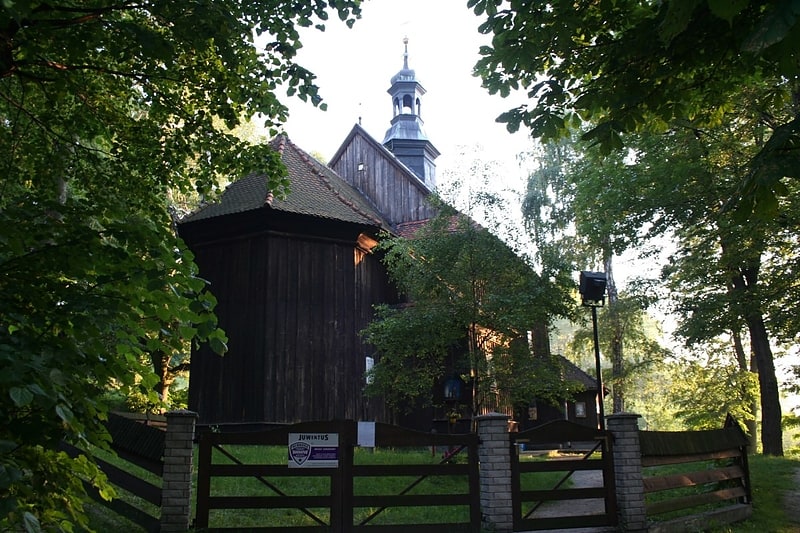
St. Sebastian Church - Roman Catholic parish church, located on the southeastern outskirts of Wieliczka on St. Sebastian Street.
Larch church is located on a steep slope of Babina hill among several hundred years old trees. Its construction began in 1581, thanks to the efforts of Sebastian Lubomirski, the Wieliczka magistrate at that time. The temple was consecrated by cardinal Jerzy Radziwiłł in 1598.
It is a single-nave, oriented church with a pentagonal closed chancel, narrower than the nave. A sacristy adjoins the chancel from the left (north) side. It was erected as a votive offering to thank for saving the town from a cholera epidemic.
Church as of December 1, 2013 elevated to the dignity of a Parish Church by decree of the Metropolitan of Krakow dated November 20, 2013
Address: Świętego Sebastiana 23, 32-020 Wieliczka
Rezerwat Groty Kryształowe
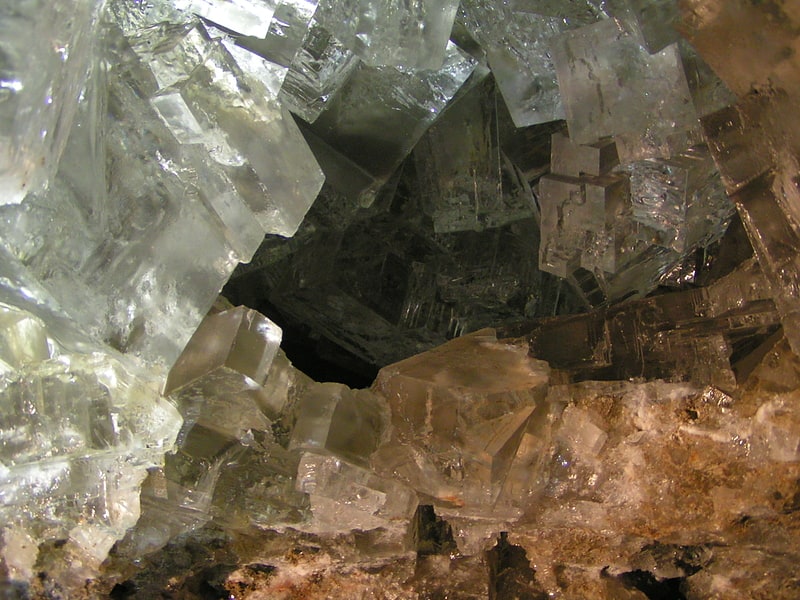
Crystal Grottoes Nature Reserve - an inanimate nature reserve in Małopolska province. The first underground reserve in Poland. It covers an area of 1.04 hectares, while its aboveground buffer zone is 2.065 hectares.
Created in 2000 in the Wieliczka salt mine, within the natural underground cavities: Lower Crystal Grotto (706 m³) and Upper Crystal Grotto (1000 m³) at a depth of 70-114 m. It is protected by a unique accumulation of halite crystals of considerable size and forms of salt karst.
According to the current protection plan, the reserve is under active protection. The reserve is not available for mass tourism due to the risk of harmful changes in microclimate caused by the presence of people, which may result in corrosion of crystals. It can be made available for scientific and educational purposes.
The reserve is supervised by the Management Board of Wieliczka Salt Mine S.A.